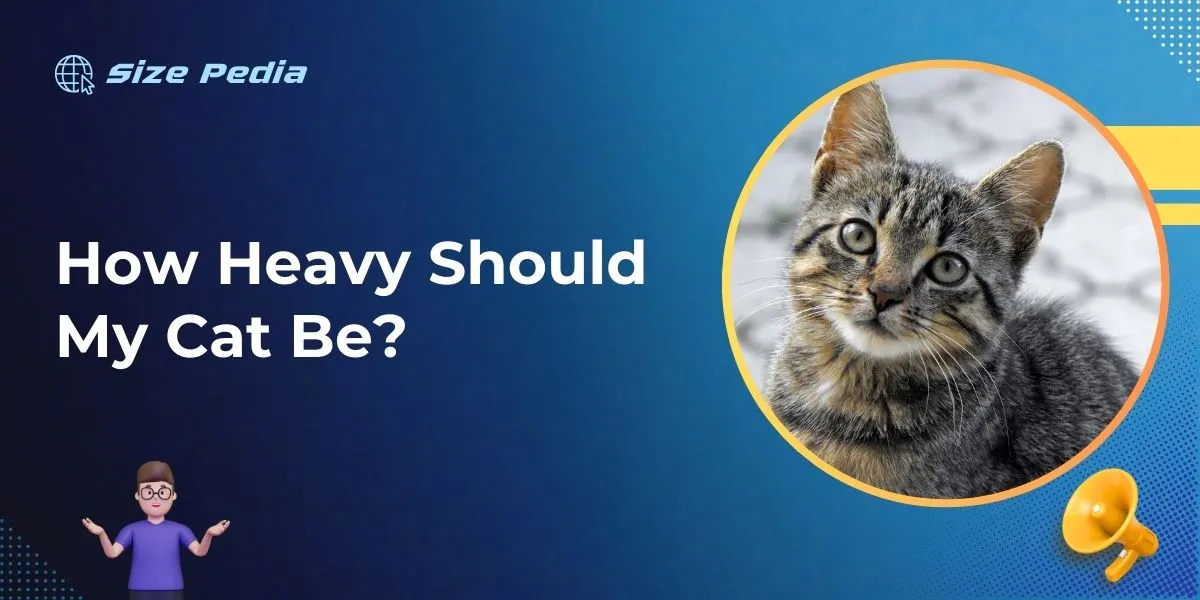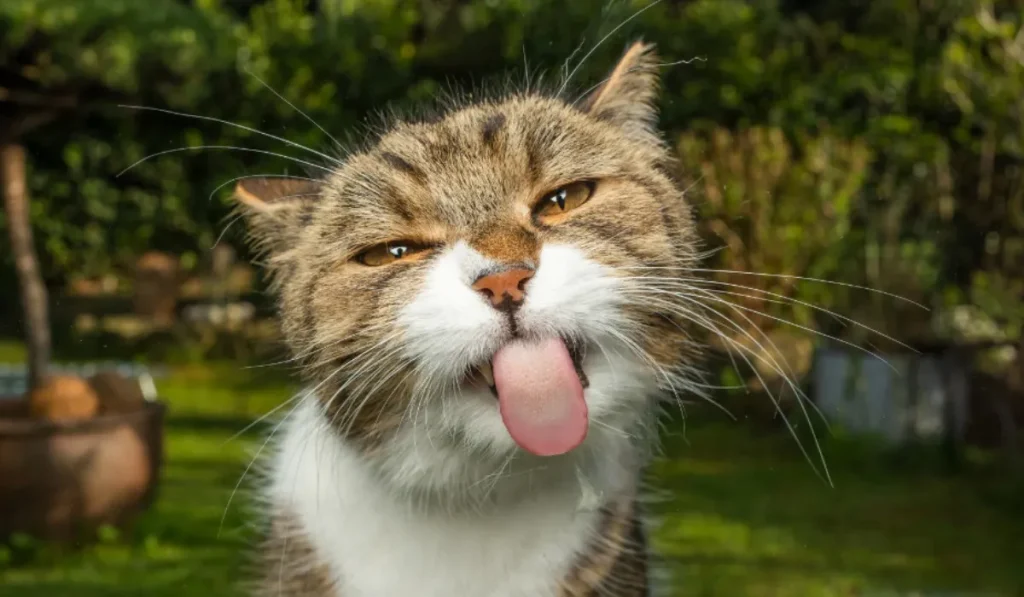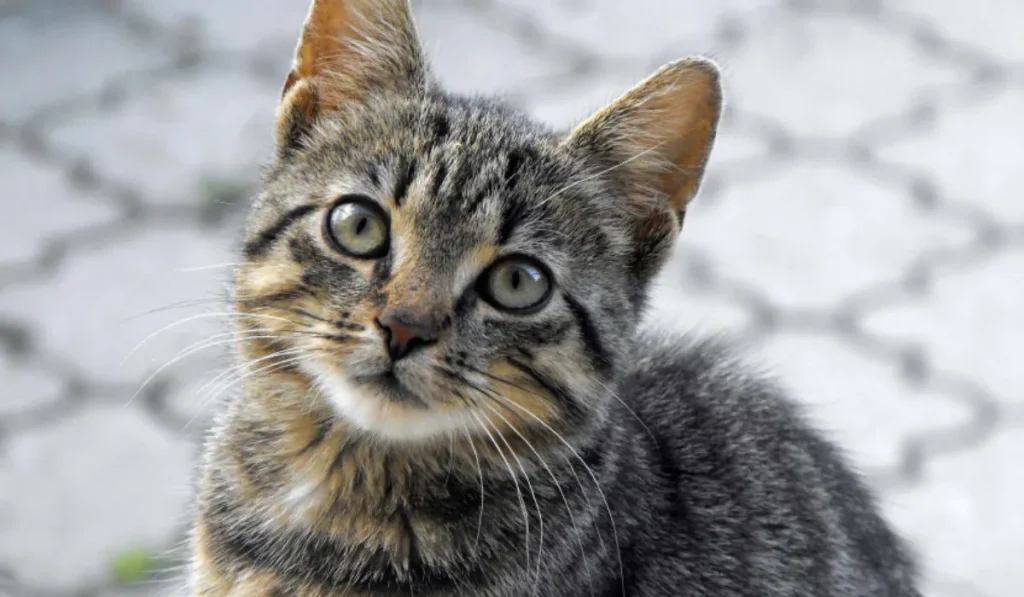The ideal weight for a cat depends on its breed and size, but most domestic cats should weigh between 8-10 pounds. Healthy weight varies, so consulting a vet is wise for breed-specific advice.
Cats come in a variety of shapes and sizes, and understanding your cat’s weight is crucial to maintaining its health.
Excess weight can lead to numerous health issues, including diabetes, arthritis, and heart problems. On the other hand, a cat that is too thin might be suffering from malnutrition or underlying health conditions.
Pet owners should focus on maintaining an optimal weight for their feline friends through a balanced diet and regular exercise.
It’s essential to monitor your cat’s weight regularly and consult with your veterinarian if you notice significant changes. By keeping your cat at a healthy weight, you help ensure a long, happy, and active life.

Ideal Cat Weight: Why It Matters
The right weight for a cat is crucial for its health and happiness. Just like in humans, a cat’s weight affects its overall well-being.
A healthy weight can mean a longer, more active life for your furry friend. Understanding what that weight should be, and maintaining it, is key for any responsible cat owner.
Health Risks Of Overweight Cats
Extra pounds on a cat can lead to some serious health issues:
- Diabetes mellitus: Just like humans, overweight cats can develop diabetes.
- Joint problems: Extra weight puts more strain on a cat’s joints.
- Heart Disease: Fat cats work harder to pump blood through their bodies.
- Liver issues: Fatty liver disease is a common risk for overweight felines.
Dangers Of Underweight Cats
Not enough weight also poses risks:
- Weak immune system: Skinny cats catch infections easier.
- Energy levels: They often lack the energy for a playful life.
- Growth: They may not develop fully if they are underfed while young.
Factors Influencing Feline Weight

Understanding how much your cat should weigh is vital for their health. Many factors can change a cat’s weight.
Let’s explore some key elements that every pet owner should know.
Breed Specifics And Weight Variations
Not all cats weigh the same. Certain breeds have unique weight ranges. A Siamese might be lighter than a Maine Coon.
- Small Breeds: Siamese, Sphynx – usually lighter.
- Large Breeds: Maine Coon, Ragdoll – often heavier.
Knowing your cat’s breed helps you understand their ideal weight.
Age And Metabolic Rate
As cats age, their metabolic rate changes. Kittens grow fast and need more food. Older cats slow down and need less.
| Age | Metabolic Rate | Food Needs |
|---|---|---|
| Kittens | High | More |
| Adult Cats | Moderate | Moderate |
| Senior Cats | Low | Less |
Keep track of your cat’s age and their activity level to adjust food and exercise.
Assessing Your Cat’s Body Condition
Knowing your cat’s ideal body weight is vital for their overall health. You can check if your furry friend is in good shape through a simple assessment at home.
This part of the blog will guide you on how to tell if your cat is at a healthy weight using two popular methods.
Body Condition Scoring Systems
Body Condition Scoring (BCS) is a widely-used method to assess a cat’s fat levels and overall body shape.
The system ranges from 1 to 9, with 1 being too thin and 9 being obese. A score of 4 or 5 is ideal, indicating that your cat has the right amount of body fat.
- A score of 1-3 suggests your cat may be underweight.
- A score of 6 or above indicates your cat may be overweight or obese.
Consult your vet for the most accurate scoring. They can give you a BCS chart and demonstrate how to rate your cat.
Visual And Tactile Techniques
Along with BCS, you can use visual and tactile assessments to check your cat’s body condition. This method involves looking at and feeling your cat’s body.
| Area | Healthy Cat | Signs of Weight Issue |
|---|---|---|
| Ribs | Palpable with slight fat cover | Hard to feel ribs under a thick fat layer |
| Waist | Visible when viewed from above | No visible waist, straight or bulging sides |
| Abdomen | Tucks up from ribcage to thighs | Hangs down, no abdominal tuck |
Using your hands, feel your cat’s ribs and spine. They should have a slight fat cover. Check for a waist behind the ribs when you view them from above. Note, this technique requires a gentle touch.
With these methods, you can stay on top of your cat’s health and address weight concerns promptly.
Consulting With A Veterinarian

Consulting with a Veterinarian is key to understanding your cat’s ideal weight. Cats come in various shapes and sizes, and their weights can vary significantly by breed, age, and activity level.
A vet will provide an informed perspective and personalized advice to ensure your cat maintains a healthy weight.
Professional Weight Assessment
Your cat’s health can shine through proper weight management. Starting with a professional weight assessment lays the foundation for a healthy lifestyle.
During the assessment, the vet will weigh your cat and evaluate its body condition score. This score helps determine if your pet is underweight, overweight, or at an ideal weight.
- Understanding your cat’s current health status
- Identifying potential weight-related health risks
- Setting realistic weight management goals
Creating A Tailored Diet Plan
To support your cat’s ideal weight, a tailored diet plan is crucial. Your vet can recommend specific foods, portions, and feeding schedules.
They may also suggest dietary adjustments based on your cat’s unique needs. Proper nutrition is a vital part of your cat’s health and wellbeing.
| Current Weight | Target Weight | Recommended Food |
|---|---|---|
| Overweight | Goals set by vet | Low-calorie diet |
| Underweight | Goals set by vet | High-calorie supplements |
| Ideal Weight | Maintenance | Well-balanced diet |
After the initial assessment, scheduled check-ups help monitor your cat’s progress. Tailored diet plans work best when combined with regular physical activity.
Your vet may recommend interactive play or other forms of exercise to complement the diet plan.
Nutrition And Feeding For Optimal Weight
Exercise And Weight Management
Maintaining the right weight for your cat is crucial. Just like humans, cats need regular exercise to stay healthy.
Finding the balance between food and activity can keep your cat in top shape. Let’s explore some fun ways to help your feline friend get moving!
Interactive Playtime
Playtime is not just about fun, it’s a key part of exercise. Cats love to chase, pounce, and leap. Use toys to mimic prey movements.
Fishing pole toys, laser pointers, and feather wands are great tools. Aim for 10-15 minutes of play, twice a day. This helps burn calories and keeps muscles toned.
- Daily play sessions prevent boredom and obesity.
- Switch up the toys to keep your cat interested.
- Engage your cat with hide-and-seek games using treats.
Environmental Enrichment To Encourage Movement
Your home can be a playground for your cat. Offer various spaces to climb, scratch, and explore.
Cat trees, scratching posts, and shelves are perfect for this. Create vertical spaces to encourage jumping and climbing. These activities are excellent for maintaining a healthy weight.
| Enrichment Item | Benefits |
|---|---|
| Cat Trees | Mimics climbing, provides exercise |
| Window Perches | Encourages jumping, offers entertainment |
| Puzzle Feeders | Combines eating with mental stimulation |
Remember, every cat is unique. Mix and match these suggestions to find what works best for your pet.
Keep an eye on their waistline and adjust activities accordingly. A healthy cat is a happy cat!
Monitoring Progress And Adjusting Care
Monitoring Progress and Adjusting Care for your feline friend is essential to ensure they maintain optimal health.
Knowing how heavy your cat should be involves tracking their weight and adjusting your approach as needed. Let’s explore how to do this effectively with regular check-ups and dietary considerations.
Regular Weigh-ins At Home
Keeping track of your cat’s weight at home is vital. It helps detect any changes that may indicate health issues or the need to modify their diet. Here’s how to maintain this routine:
- Choose a consistent time and scale to weigh your cat. This ensures accuracy.
- Record the weight in a notebook or app. Watch for trends over time.
- If you notice weight changes, schedule a vet visit to discuss them.
When To Adjust Your Cat’s Diet And Exercise?
As you monitor your cat’s weight, you’ll identify when it’s time to adjust their routine:
| Weight Change | Action Needed |
|---|---|
| Weight Loss | Increase caloric intake or check for health issues. |
| Weight Gain | Reduce portions or enhance physical activity. |
| Stable Weight | Continue current care, still watchful for subtle changes. |
Remember, a healthy weight is different for every cat. It depends on breed, age, and size. Consult your vet before making changes to your cat’s diet or exercise regimen.
FAQs About the Ideal Weight for Cats
What Is The Ideal Weight For A Cat?
The ideal weight for a cat varies based on breed, age, and size. Typically, domestic cats should weigh between 8-10 pounds.
However, some larger breeds may weigh more. Consult with a vet for breed-specific weight ranges.
How To Tell If My Cat Is Overweight?
You can tell if your cat is overweight by assessing body shape. Feel for excess fat or lack of a waistline. You should be able to feel their ribs with a slight fat covering. A vet can offer a precise assessment.
Can Indoor Cats Be Prone To Weight Gain?
Yes, indoor cats can be prone to weight gain, often due to lower activity levels and overfeeding.
Regular play and portion-controlled diets can help maintain a healthy weight. It’s essential to engage indoor cats with exercise to avoid obesity.
What Health Risks Come With Cat Obesity?
Obesity in cats can lead to diabetes, arthritis, urinary problems, and liver disease.
Heavy cats are at a higher risk for health problems, including a decreased lifespan. Keeping a cat at a healthy weight is vital for overall well-being.
Conclusion
Determining your cat’s ideal weight involves various factors including breed, age, and size. Consult with a veterinarian for personalized advice. Keeping your cat active and monitoring their diet can contribute to a healthy lifestyle. Remember, a fit cat is a happy cat.
Embrace responsible pet ownership for your feline friend’s well-being.
Resources:
https://www.cdc.gov/healthypets/pets/cats.html
https://www.storycountyiowa.gov/727/Cats-as-Pets
